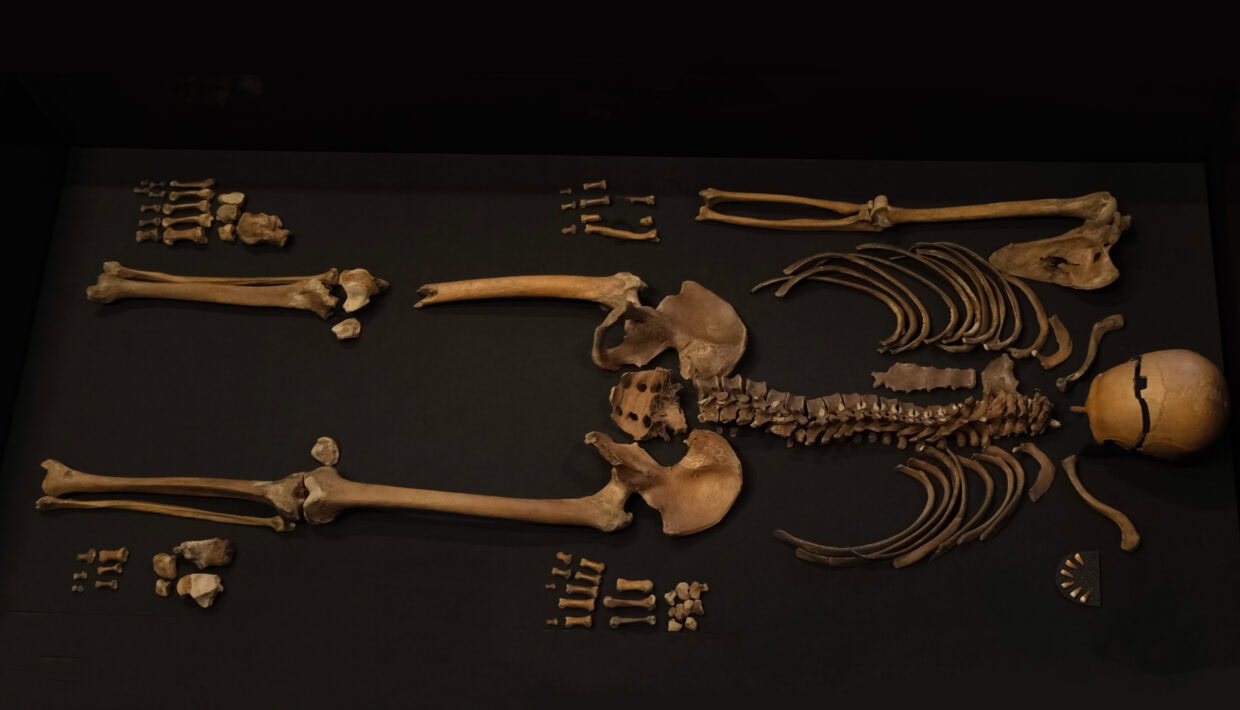
DNA analysis reveal that the man in the well at Sverresborg was blond, blue-eyed, and from the south of Norway
Analyses of the skeleton retrieved from the well at Sverresborg in Trondheim in 2016 shed new light on a dramatic story from King Sverre’s saga. Now, researchers know how old the man was, what he looked like, and where in Norway he was from.
Background
- The article is the result of an interdisciplinary collaboration initiated by NIKU and the NTNU University Museum. The results highlight, among other things, the potential of population genetics for archaeological and cultural-historical research.
- The archaeological excavations were carried out by NIKU on behalf of the Directorate for Cultural Heritage.
- The osteological analyses were conducted by NIKU on behalf of the Directorate for Cultural Heritage.
- The DNA analyses were performed as part of a PhD project and are not part of NIKU’s excavation project.
A multidisciplinary collaboration between researchers from Norwegian institute for Cultural Heritage Research (NIKU), NTNU University Museum, and others has resulted in a scientific article published in the journal iScience: Corroborating written history with ancient DNA: The case of the Well-man described in an Old Norse saga: iScience.
The article highlights the archaeological and historical context of the skeletal find along with the genetics and presents the methods and results of the DNA analyses.
–It is not often that we get the opportunity to compare physical remains from archaeological excavations with specific individuals from the sagas, says Anna Petersén. Petersén was NIKU’s project leader for the excavations of the skeleton in 2014 and 2016 and co-author of the article that has now been published.
The study is based on the genetic results of the “man in the well” presented in Martin R. Ellegaard’s PhD dissertation from 2022.
The Skeleton in the Well at Sverresborg
- 1197: According to Sverre’s Saga, a man was thrown into the well at Sverresborg by the Baglers with the intention of poisoning the drinking water.
- 1938: Gerhard Fischer found a skeleton in the well at Sverresborg. It was not retrieved.
- 2014: The Directorate for Cultural Heritage commissioned an assessment of the skeleton’s condition. Parts of the skeleton were retrieved. It was confirmed that the skeleton belonged to a man in his late 30s. Dating of the skeleton estimates that the man died within the timeframe of the event described in Sverre’s Saga.
- 2016: The entire skeleton was retrieved, and osteological analyses were conducted by NIKU.
- 2024: An interdisciplinary research article presents new DNA results of the skeleton.
Osteological analyses of the skeleton performed by Hanne Ekstrøm Jordahl (NIKU), and the results from the DNA analyses, provides a good picture of what the man in the well looked like when he was alive.
The event was described in Sverre’s saga
The dramatic story took place during a raid on Sverresborg in 1197 and was described relatively shortly after in Sverre’s saga:
“The Baglers took all the goods that were in the castle, and then they burned all the houses that were there. They took a dead man and threw him headfirst into the well, carried stones there and laid them over until it was full.” (Sverre’s saga, chapter 137).
The castle was built by Sverre Sigurdsson around 1180 and placed on top of a flat rock knoll southwest of the medieval town of Nidaros (now Trondheim). King Sverre called the castle Sion, most likely after the Christian notion of Sion as the heavenly Jerusalem.
The Bagli Party or Bagler (Old Norse: Baglarr) was a faction or party during the Norwegian Civil Wars. The Bagler faction was made up principally of the Norwegian aristocracy, clergy and merchants. The name “Bagler” is connected to the Old Norse word “bagall” (from the Irish “bachall” and Latin “baculus”), which means bishop’s staff.
The Birkebein Party or Birkebeinar (Old Norse: Birkibeinar) was the name for a rebellious party in Norway, formed in 1174 around the pretender to the Norwegian throne, Eystein Meyla. The name has its origins in propaganda from the established party that the rebels were so poor that they made their shoes of birch bark. Although originally a pejorative, the opposition adopted the Birkebeiner name for themselves and continued using it after they came to power in 1184.
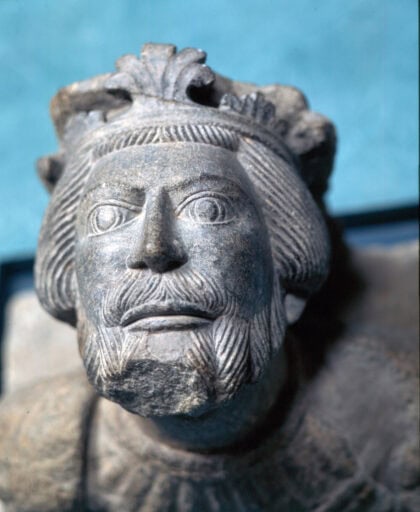
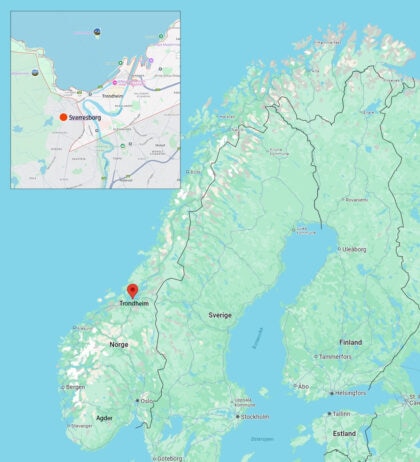
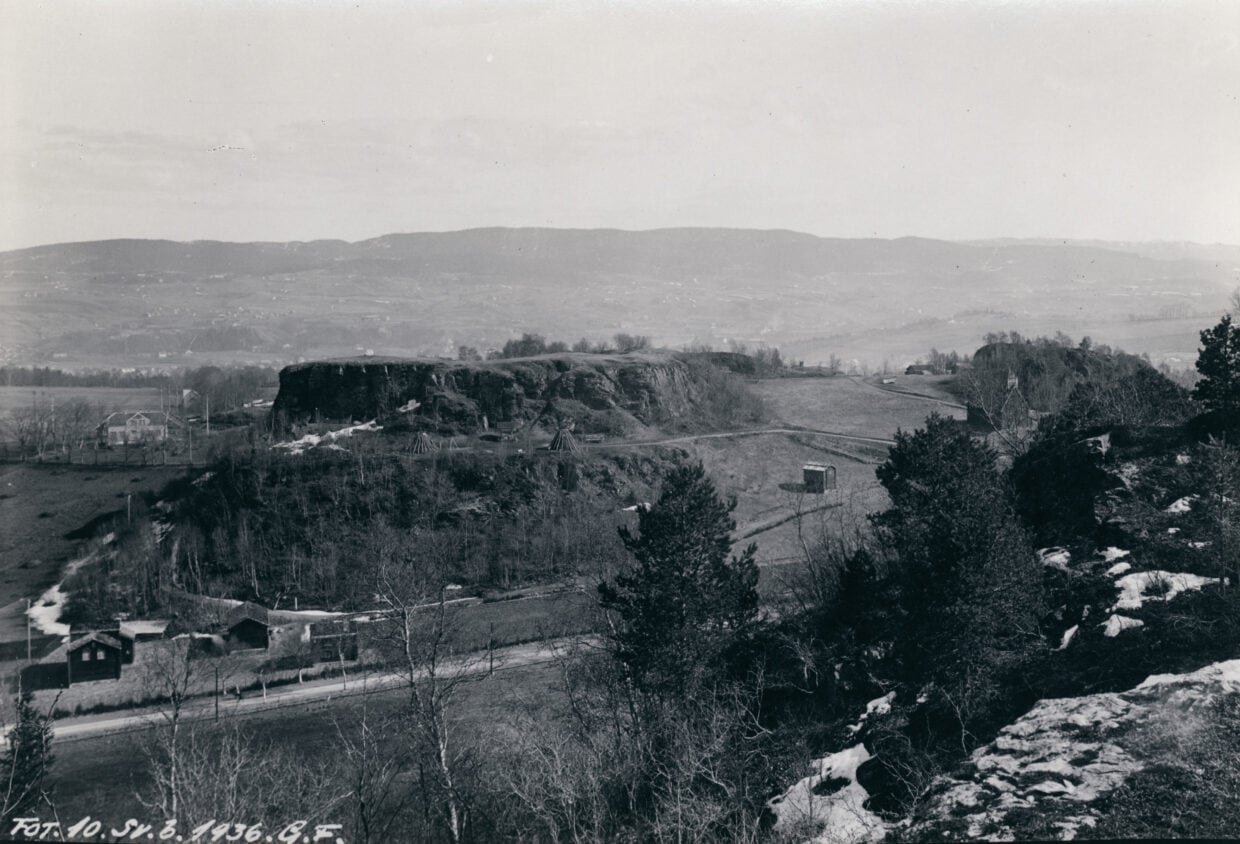
The castle complex consisted of at least one stone building and many wooden buildings. A natural inflow between a cleft in the rock was the only source of water.
During the Norwegian civil war (1130-1240), the Baglers made several attempts to capture the castle, but the Birkebeiners held out until 1197. The episode described in the saga tells both the fate of the castle and the man. His body was thrown into the well by the Baglers, probably in an attempt to poison the Birkebeiner’s only drinking source.
After the attack, the castle complex lay abandoned until Håkon Håkonsson (1204-1263) attempted a rebuild, however, the well was not completely cleared.
The skeleton in the well was first discovered in 1938
Fast forward to 1938. This headline could be read in Adresseavisen:
‘Sensational historical find at Sverresborg. Skeleton at the bottom of the old well. The Baglers’ victim who, according to the saga, was thrown into the well in 1197?’
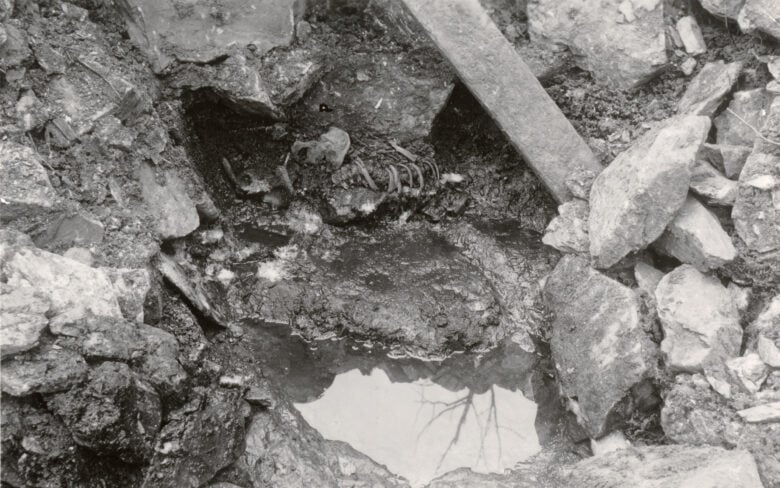
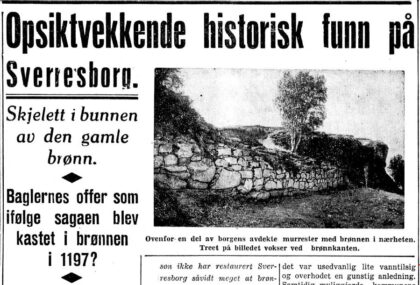
The well was excavated in connection with the restoration project led by Architect Gerhard Fischer from 1936 to 1938. It is during this phase of work that the skeleton was uncovered. In 1939, Fischer specifically referred to the skeleton as ‘the Birkebeiner.’ There is no mention in Sverre’s saga that the man was a Birkebeiner, but this perception has taken hold in history. The idea that the man belonged to the Birkebeiners form Mid-Norway has not been challenged—until now. More on that later.
Unfortunately, restoration work was halted with the advent of war, putting a stop to the excavation. It would take another 80 years before excavation of the skeleton was resumed.
New archaeological investigations in 2014 and 2016
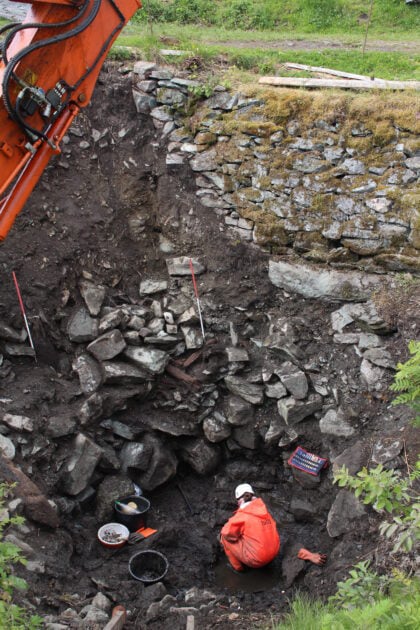
In 2014, the Directorate for Cultural Heritage commissioned a archaeological investigation by NIKU. The task was to examine the condition of the skeleton.
The job was challenging. The well was deep and inundated with water. These problems were compounded by the loss of Fischer’s original documentation, which made it difficult to locate the skeleton. To make matters worse the German forces had used the well to discard rubbish during the occupation and it was now filled with large boulders and other debris.
However, within a week, the archaeologists managed to spot parts of the skeleton which had become wedged between large stones. Parts of the skeleton were retrieved and were used to determine the sex and age of the individual.
Analysis conducted by Dr. Sean Denham at the University of Stavanger showed that the individual was a man aged 30-40. In addition, the results of the radiological tests confirmed that the man lived at the time of the event described in the saga.
During a new and more extensive investigation in 2016, the archaeologists were able to work more systematically. The stones were carefully lifted out, in order to access as much of the skeleton as possible and document in its original position.
More than 90% of the skeleton was recovered. A full osteological analysis was conducted on the remains.
Well built man with back pain and lung disease
The brief saga description does not mention the man’s appearance or age, only that he was dead when he was thrown into the well.
During the excavations, the skull was found some distance from the torso, and the legs were twisted up towards the torso. The left arm was missing but finger bones from the left hand were found, and a shoe was found on the right foot. This was the only trace of clothing, and no indication that the body had been bound or wrapped.
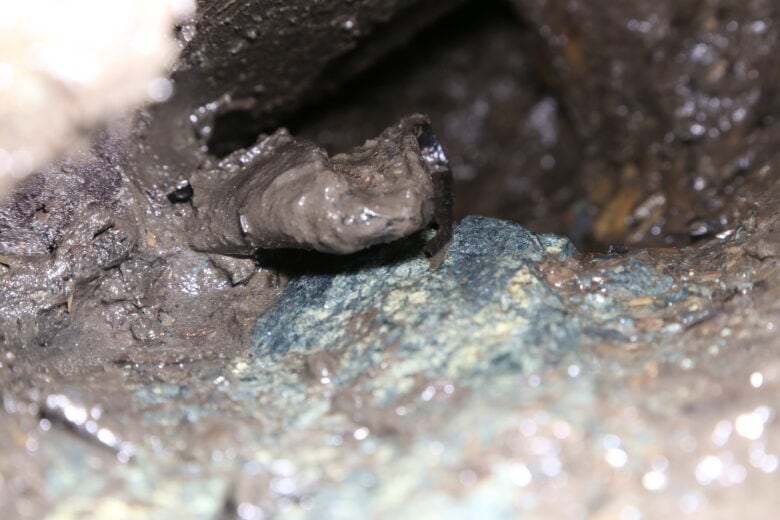
Hanne Ekstrøm Jordahl, an osteoarchaeologist and expert on human remains at NIKU, has examined the skeleton.
– When he died, he was in his late 30s and was probably between 175 and 180 cm tall. That was quite tall for this time.
His body was robust, with pronounced muscle attachments on the arms and legs. His facial features were marked and masculine with a strong forehead and a somewhat prominent nose.
Several serious disease traits were detected. Among other things, there were changes in the spine, and pleural plaques (calcified lung lining) were visible on the inside of the chest, which may indicate that the man suffered from tuberculosis or so-called silicosis.
Overall, Jordahl’s osteological analysis shows that the man’s health was poor and that it must have been both limiting and troublesome.
There were many injuries on the skeleton, and it is difficult to determine whether these occurred before, after, or in connection with death. Jordahl, however, points to some injuries that are more likely to have occurred in connection with the death. One of these is a crushing injury on the left side of the occipital bone, which has perforated the skull. The blow does not necessarily have to have resulted in death, but unconsciousness and possibly a brain hemorrhage.
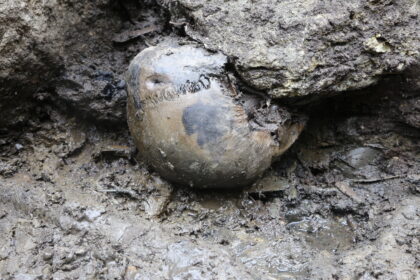
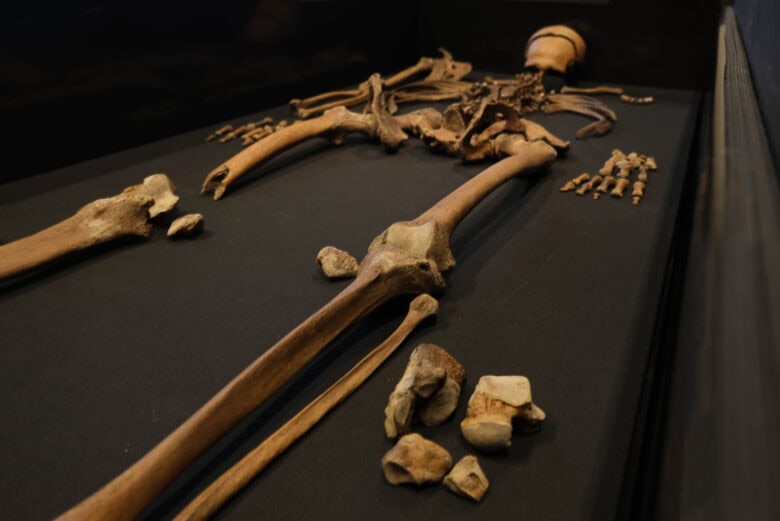
DNA analysis adds flesh to the bones
Martin Ellegaard had just begun his PhD in population genetics and archaeological DNA at the NTNU University Museum when Petersén contacted him and told him about the man in the well.
With the help of new methodology, combined with good craftsmanship in the laboratory and a good dose of stubbornness, Ellegaard finally managed to extract human DNA from a tooth.
The results of the analyses conducted in connection with Ellegaard’s PhD were surprising: the man was blond, blue-eyed, and from Agder.
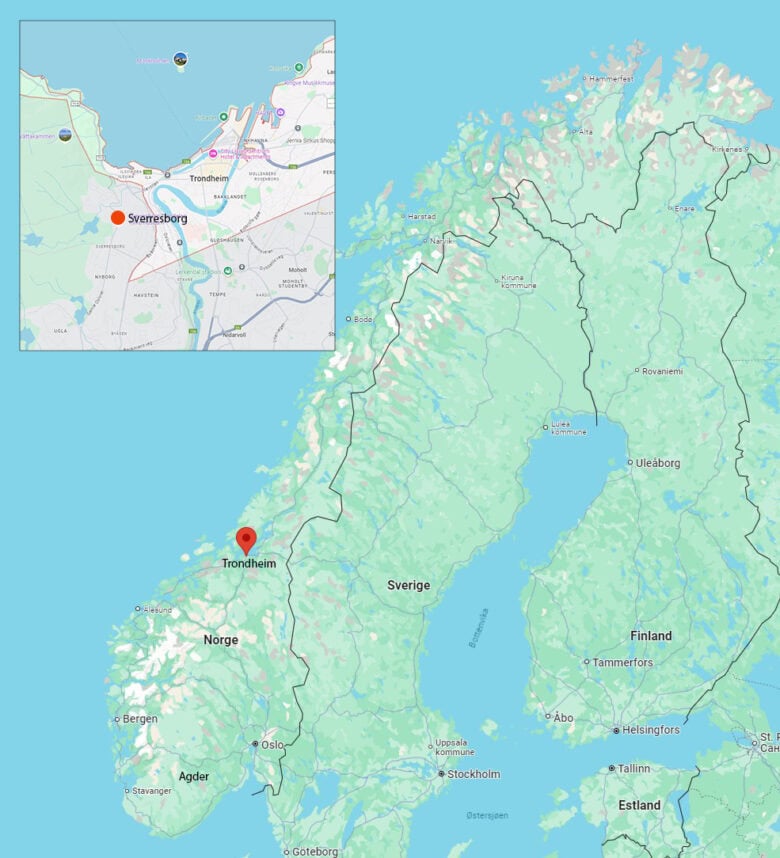
Popular culture must take much of the blame for the stereotype of the tall, blond, and blue-eyed Norwegian, but the fact is that a thousand years ago, Norwegians looked different than we do now. There were more migrants in Norway, and black hair and darker skin were more common than they are today. It is only in recent times that blond and blue-eyed individuals have become prominent.
The most unexpected result, however, was the man’s geographical origin. As previously mentioned, the man from Sverre’s saga has been perceived as a Birkebeiner and a Trønder (from mid-Norway), even though the saga text does not say anything about that. The reason for this assumption is based on the idea that the Baglers would hardly have thrown one of their own into a well but given him a proper burial. The DNA result, however, showed that the man was unequivocally from Agder (southern Norway), and not from Trøndelag.
This raises new questions. Perhaps the man was not a Birkebeiner after all? Could the Birkebeiners be in fact a group of people from different geographical areas? Did the man work as a stonemason at the castle? Did he get caught between the Birkebeiners and the Baglers and become a random victim?
Unfortunately, the DNA analysis do not provide answers to these questions.
Unique opportunity to add details to historical record
Ellegaard’s supervisor and the main author of the article presenting these findings, Professor Michael Martin at NTNU, explains the significance of the results:
– As far as we know, this is the oldest case where genomic information has been obtained from a specific person mentioned in old historical sources.
By analyzing genomic information from the skeleton, researchers have been able to obtain new details about the person, such as his physical characteristics and relationship to other populations.
These scientific discoveries enhance the narrative of Sverre’s Saga by providing information absent from the historical text. This is a rare and unique opportunity to add to the historical record while also providing a rare insight into Sverre’s world.
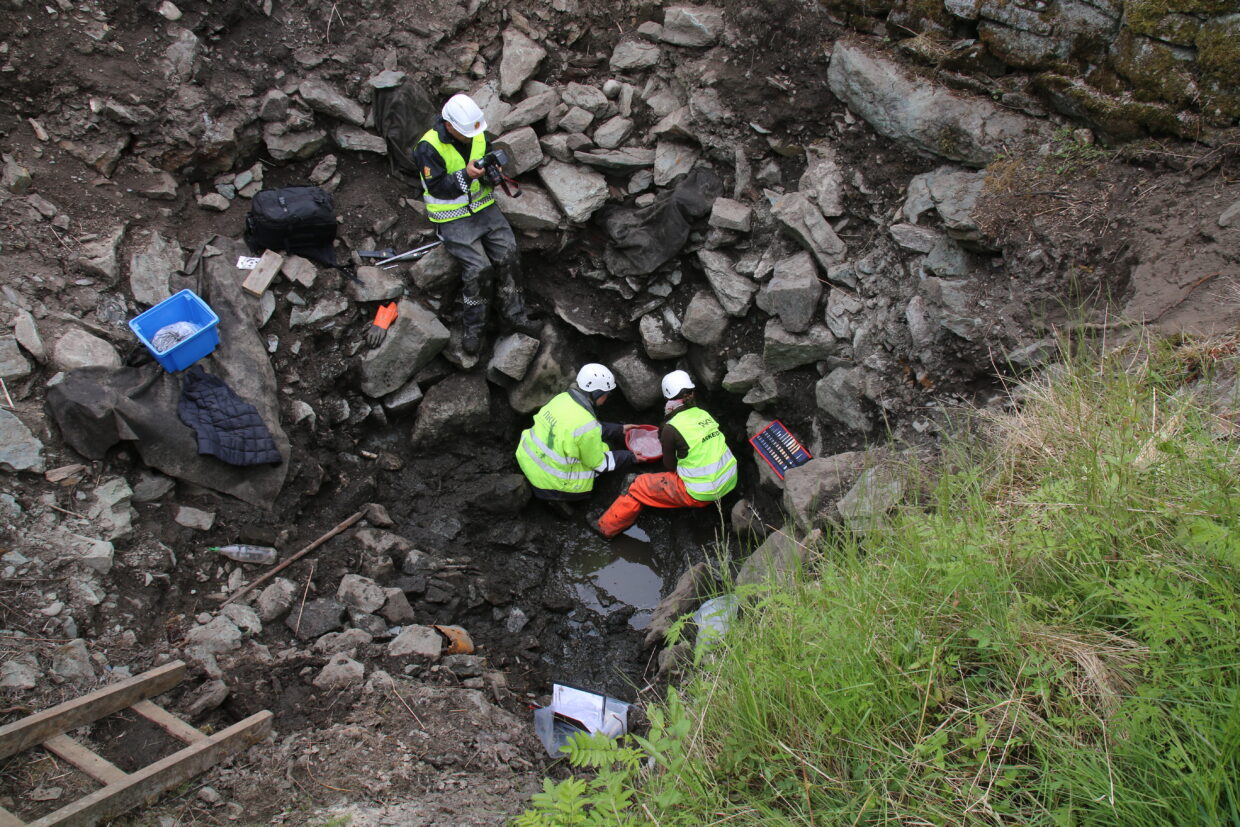
As more genetic and isotopic data are collected from both current populations and ancient skeletal remains, this interdisciplinary approach can in the future be used to physically describe and reconstruct the life stories of otherwise anonymous people whose remains are found in archaeological excavations.
– This can include details such as their movements between different geographical regions, which can provide us with a better understanding of their lives and societies, explains the professor.
From ‘the man in the well’ to ‘the Agder man’
The man who ended his days at the bottom of a well has till recently been an anonymous individual.
These results have helped bring the man in well out from the shadows of history and helped shine a light on who he really was.
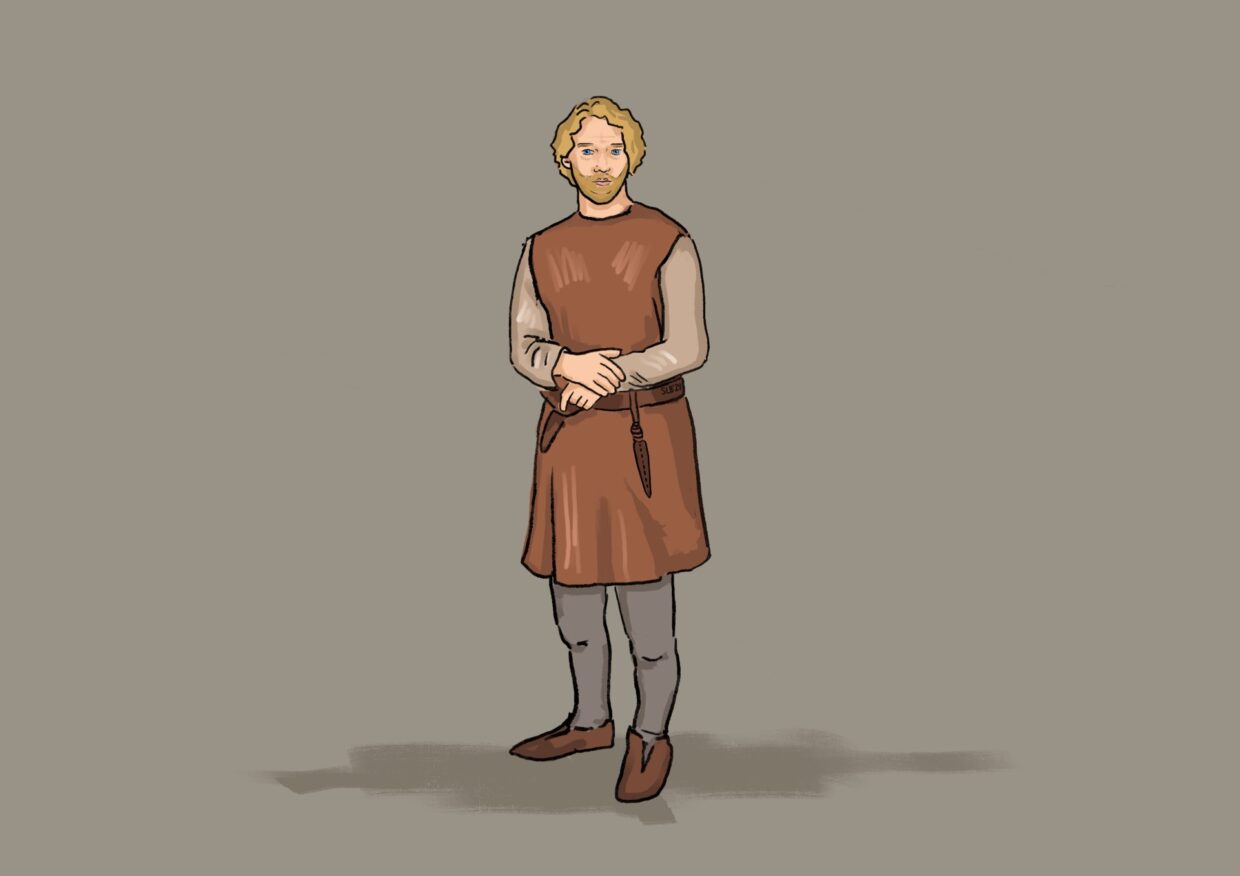
Sverre’s saga is the only source we have which refers to the man in the well. Information obtained from archaeology, and in this case genetic analyses, has been important in assessing the validity of the text.
Everything indicates that the dramatic episode from Sverre’s saga really happened.
– To identify an individual and connect them to an actual historical event is very rare. It is however, difficult establish his allegiances – was he a Birkebeiner or a Bagler or was a random victim, is a question which may never be answered, says Petersén.
Now that we know much more about the man in the well, it may be more appropriate instead to rename him ‘the Agder man’.
The man from Agder is currently on display at the NTNU University Museum in Trondheim.

